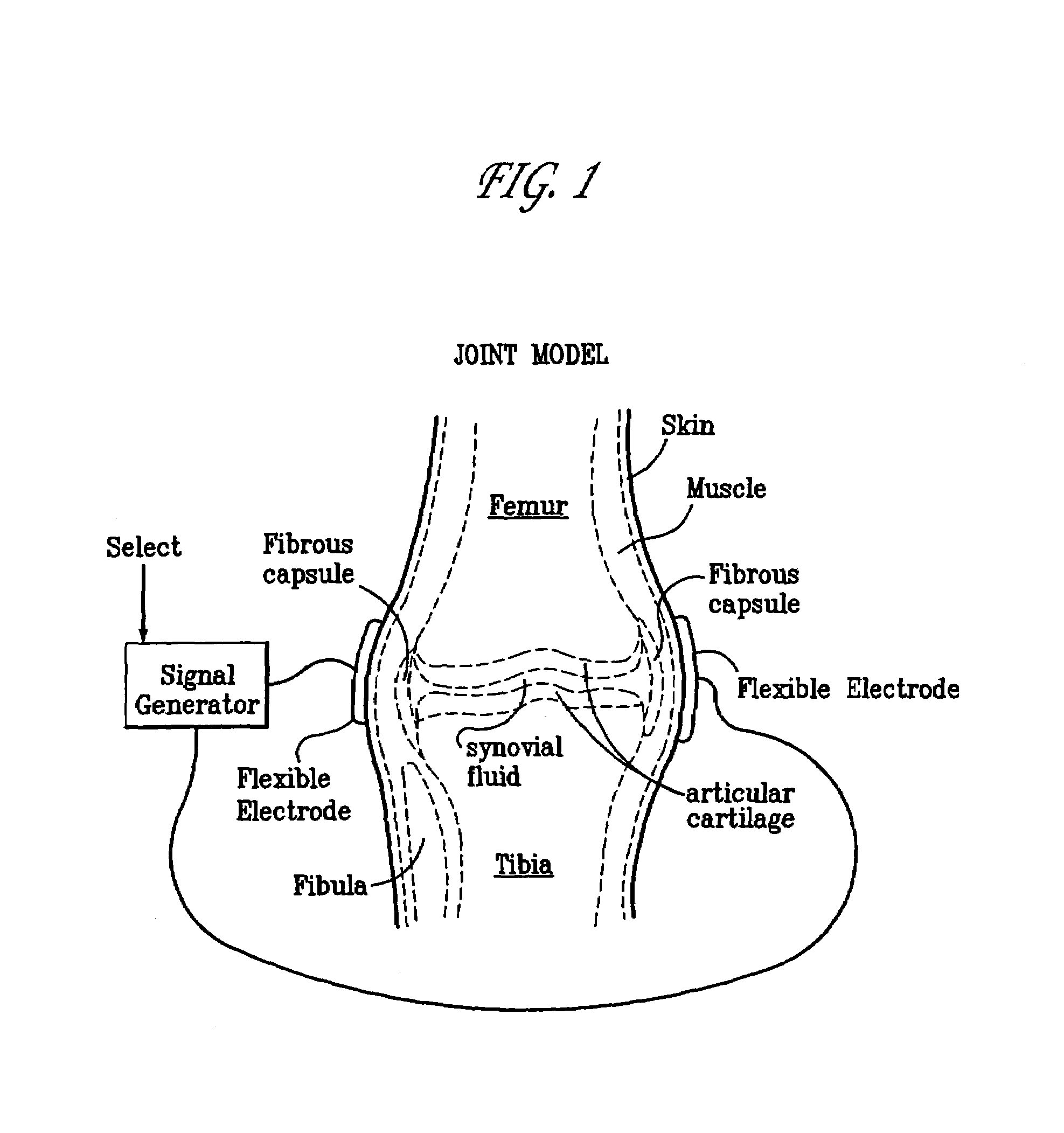Method and device for treating osteoarthritis, cartilage disease, defects and injuries in the human knee
a technology of cartilage disease and human knee, applied in the field of human knee cartilage disease, bone disease, defects and injuries, can solve the problems of different electrical properties of living structures, the spatial complexity of anatomical compartments,
- Summary
- Abstract
- Description
- Claims
- Application Information
AI Technical Summary
Benefits of technology
Problems solved by technology
Method used
Image
Examples
Embodiment Construction
[0038]The invention will be described in detail below with reference to FIGS. 1–16. Those skilled in the art will appreciate that the description given herein with respect to those figures is for exemplary purposes only and is not intended in any way to limit the scope of the invention. All questions regarding the scope of the invention may be resolved by referring to the appended claims.
Definitions
[0039]As used herein, the phrase “signal” is used to refer to a variety of signals including mechanical signals, ultrasound signals, electromagnetic signals and electric signals output by a device.
[0040]As used herein, the term “field” refers to an electrical field within targeted tissue, whether it is a combined field or a pulsed electromagnetic field or generated by direct current, capacitive coupling or inductive coupling.
Description of Illustrated Embodiments
[0041]Previous studies by the present inventors have shown that a capacitively coupled field significantly increased the prolife...
PUM
 Login to View More
Login to View More Abstract
Description
Claims
Application Information
 Login to View More
Login to View More - R&D
- Intellectual Property
- Life Sciences
- Materials
- Tech Scout
- Unparalleled Data Quality
- Higher Quality Content
- 60% Fewer Hallucinations
Browse by: Latest US Patents, China's latest patents, Technical Efficacy Thesaurus, Application Domain, Technology Topic, Popular Technical Reports.
© 2025 PatSnap. All rights reserved.Legal|Privacy policy|Modern Slavery Act Transparency Statement|Sitemap|About US| Contact US: help@patsnap.com



